I can get spooked when I’m camping alone. A twig scratching the tent becomes fingernails in my brain. Or the claws of a ravenous cougar. A moose strolling by sounds a lot like a serial killer on the loose.
When I camped out of my minivan during my first summer in the San Juans, Dilly liked to reassure me that he would keep me safe from all fingernails and claws and hooves. Sometimes safer than I needed to be.
If a stranger set foot near our campsite, he’d warn them that they were not welcome to take another step. If someone drove by, he’d watch until the dust settled from their tires, growl throttling until they faded from sight.
This was welcome behavior when I was in a secluded pull-off and saw men lumber by with loaded holsters on their hip. I liked knowing my little snuggle bug could pull off a believable act as a ferocious guard dog.
But his commitment to securing the perimeter of our campsite was less ideal when I didn’t need protection. He’s best frenemies forever with a fellow Hardrock dog who tried to jump into the minivan without an invitation.
It seemed like shrinking Dilly’s territory into a 17-foot home-on-wheels heightened his instinct to protect.
When I got back to Oregon, we asked a local dog trainer for help training Dilly to be more judicious with his security services.
We met over zoom, with Dilly napping next to us.
“Do you know Dilly’s breed?” the trainer asked.
“He’s mostly a cattle dog,” I told her, and pivoted the camera to show his classic heeler features – his speckled coat with rusty red spots, triangle ears, muscular torso.
“It makes perfect sense that he responds to disturbances to his territory,” she said. “He was bred to live on wide, open ranches, where he’s supposed to survey the land for changes – and respond when he notices something.”
“It’s in his DNA to pay attention.”
When I started to write again this winter after a long dry spell, I kept getting thwarted by some problematic behaviors standing between me and creative ideation and flow.
I was an easy target for attention-stealing apps, constantly getting yanked into endurance rounds of scrolling or deep dives down internet rabbit holes. My thumbs were finely-tuned swiping machines.
When I ran or walked, it was always with friends chattering away, a podcast playing, or a pop diva blaring. When I foam rolled and stretched, trashy television was streaming in the background.
I pulled out my phone or headphones whenever I had to wait in line, walk to the store, water plants. I’d fill nearly every pause and chore with a screen, a song, a scroll through the latest doom.
My brain had little space for mental roaming or idea hatching. I was wired for distraction and stuck in consume mode. And it’s hard to come up with original thoughts when you’re constantly immersed in the noise of others.
It’s like wanting to see where the open road takes you, only to find the garage door is stuck closed and your car can’t go anywhere.
It’s far from the first time I’ve been aware of the ways I rob myself of the space I need to write and to be more present in life, period. I know I’m susceptible to the tools designed to steal my attention.
But as I was trying to write more, I couldn’t ignore the cost of this attention heist.
I’ve tried to break my addiction to distraction. I usually approach the problem like the mean nun at a Catholic school, ruler in hand, slap ready.
If I reach for my phone, I strike. If I click over to an internet tab while I’m trying to write, I rain shame on my behavior. I mourn what I’m losing – casting all blame on myself. The knife is in my hand, the ghosts of stories floating away.
I choose stick over carrot. But that tactic never sticks. I go back to my distracted ways, no matter how much internal wrist-slapping happens.
Lately, I’ve been taking Dilly for lots of walks on our backyard trails.
Walking is one of my most reliable writing tools because the movement helps me unlock ideas and words. So, I’ve been trying to get out for more unplugged miles to reclaim some mental meandering.
Several weeks ago, we ducked into the evergreens and Dilly bounded ahead.
He bounced along, paws prancing like a two-stepping fox, and then, he stopped and perked up. His ear shot to the sky (adorably, just one ear). His hazelnut eyes scanned the forest. He stuck his snout into the air and sniffed.
This wasn’t new behavior. It’s his standard trail routine. He’s always surveying the landscape like a diligent dog detective.
It’s in his DNA to pay attention.
But I’m usually a passive observer of Dilly on the trail. There he goes, stalking woodland critters again, I’ll think, as I keep bopping along.
But lately, my eyes have followed his gaze.
I watch him scour the canopy to find the woodpecker hammering away. When a twig breaks, he snaps alert.
He’s doing exactly what I need to do, I thought, as he patrolled the underbrush for juicy scents to follow.
His instincts were spot-on this time.
I resolved to play the role of his sidekick. Dilly and Emily, forest detectives. On a treasure hunt for earth’s quiet wonders and juicy scents to follow. Ready to see where the trail takes us. Armed with open eyes, ears, snouts, and minds.
I’ve run thousands of miles on Eugene’s ridgeline trails, but was noticing things for the first time as I walked with Dilly. As I walked like Dilly.
Like, the slow marching order of spring flowers as the forest greened and blossomed – trillium first, then Pacific hound’s tongue, followed by weeping avalanche lilies, and the wild orchids that sneak into clover patches.
Where my brain once registered – “flowers,” it was now attuned to the full life cycle of every petal and stem in the forest.
My mind wandered with us. The more I walked, the more I unearthed new ideas, because the soil of my brain wasn’t overgrown with digital weeds. I found juicy words and stories to follow. I scribbled silly poems in my head. I went back to my desk and wrote thousands of words.
I felt more grounded and more connected to my internal and external worlds. And found myself craving that peace and presence, instead of the noise and distraction that’s been eating my brain alive.
I realized I didn’t need to punish my behavior, I needed to feel what I’m missing.
Would I rather stare at the garage door or drive to the coast and see what art the tide sketches in the sand?
When I sat down to write this, I wanted to highlight the really exciting things I saw when I wandered the forest with Dilly. Tell a page-turning story about being a forest detective, Emily!
But this isn’t about chasing the flashiest things.
It’s about absorbing the quiet details that aren’t detectable if we’re immersed in too much noise. It’s the subtle thrill of going from coloring with a starter set of 12 colored pencils to cracking open the biggest box, flooded with more shades than a Crayola factory.
And it’s about building an open runway for original thought to takeoff. And discovering where our minds will go when there’s less input standing in the way.
I’m not totally out-of-the-woods with distraction.
But I know the way there is to follow Dilly’s lead – and remember how good it feels to move through life with an open mind and a snout to the wind.








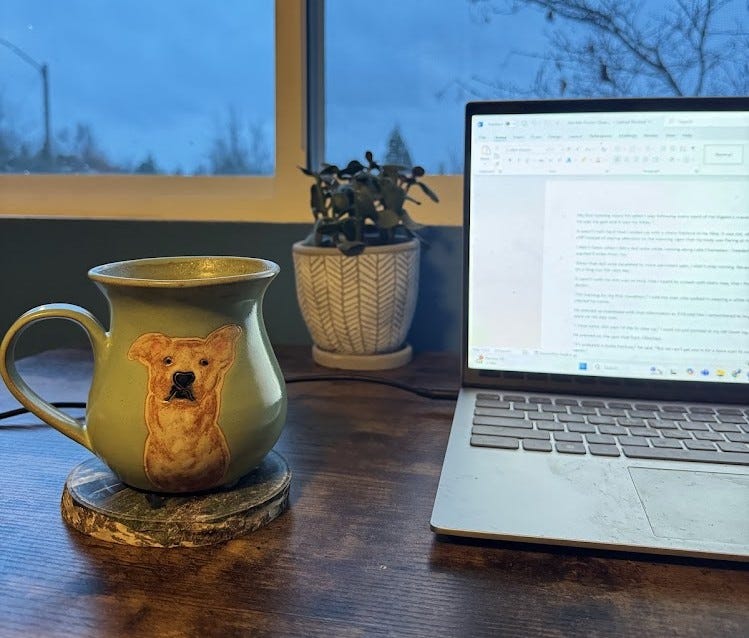
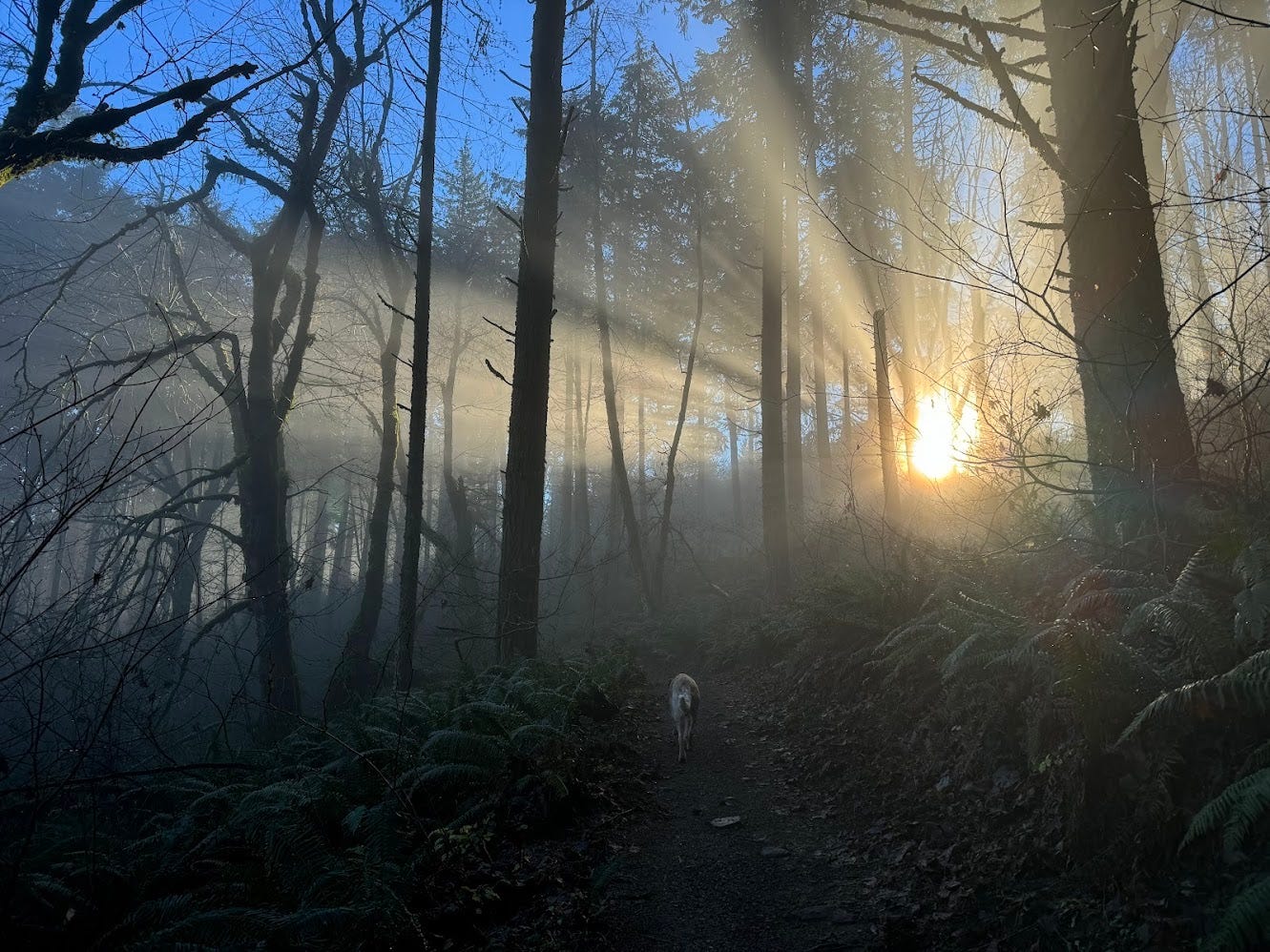
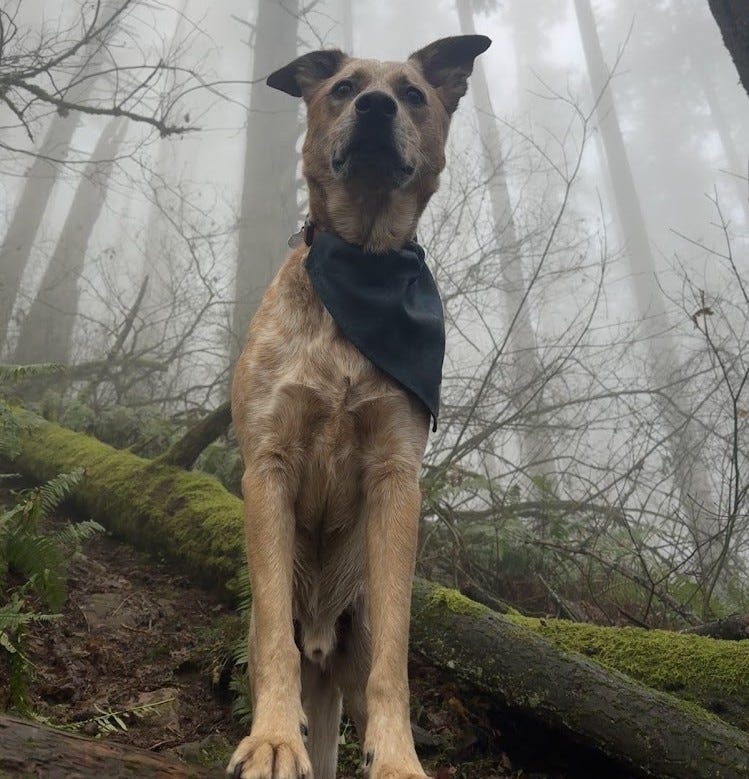
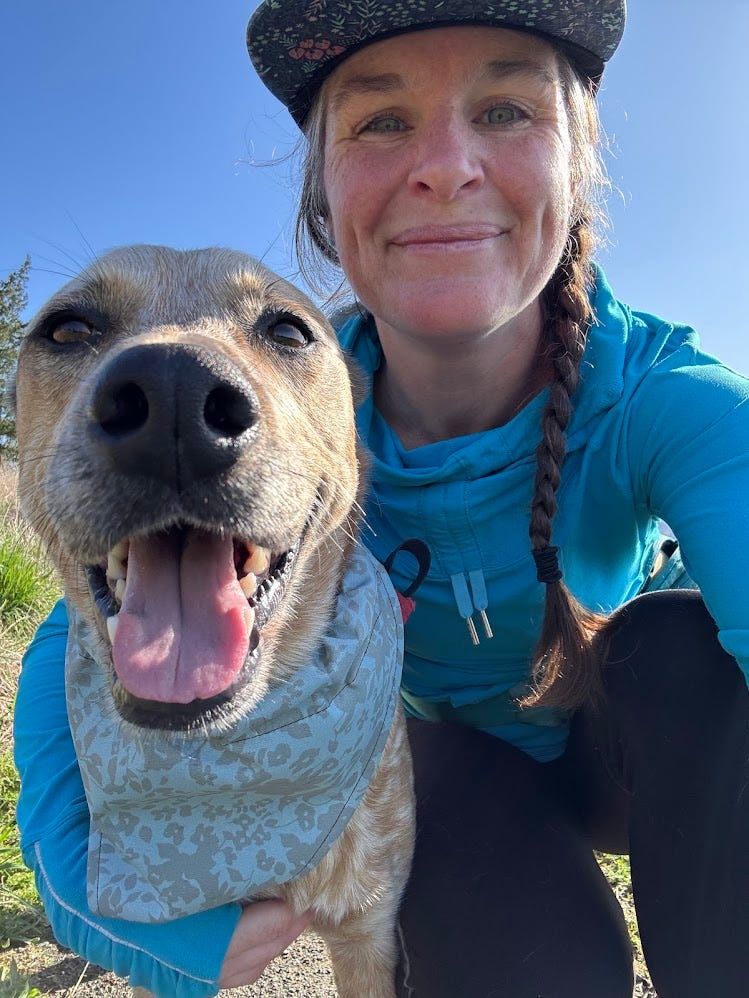

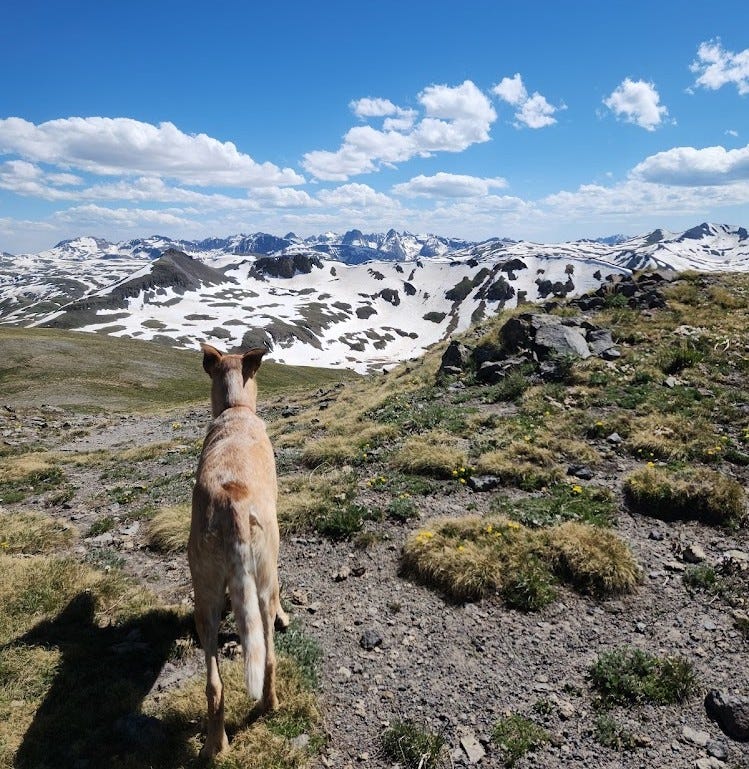
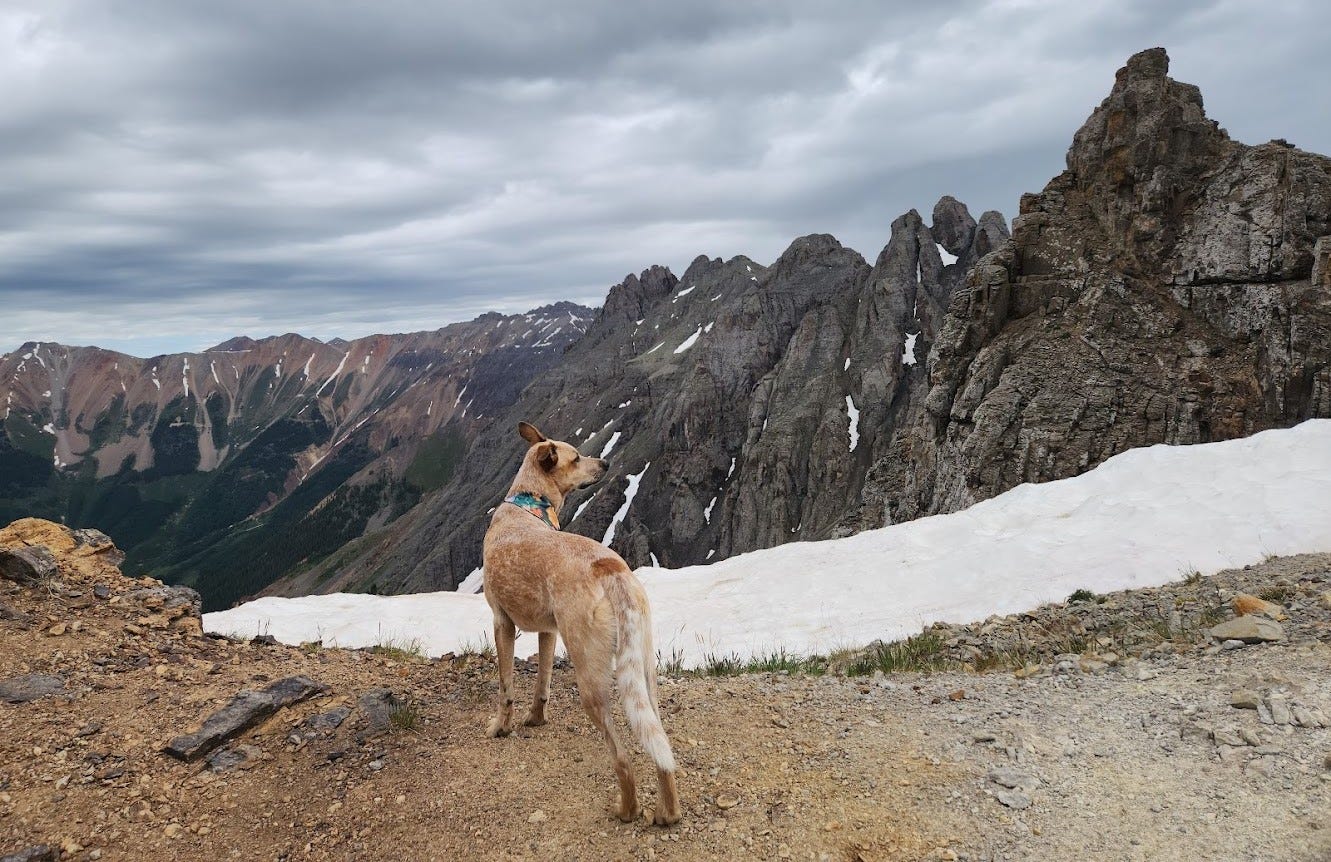
Gosh can I relate to this! Both the issue and the antidote. Thanks for sharing and for all the great pictures of Dilly!
Question about your mug with Dilly’s portrait- are you able to share where you got that? Recently lost both my dogs (brutal to lose them three weeks apart) and would love a Jasper and Wally mug.
I love this so much! What a delightful and refreshing read and take on society constantly vying for our attention, when the world is right there waiting, and making art each day (like 'the tide sketching in the sand' 🥲). Beautiful! ♡